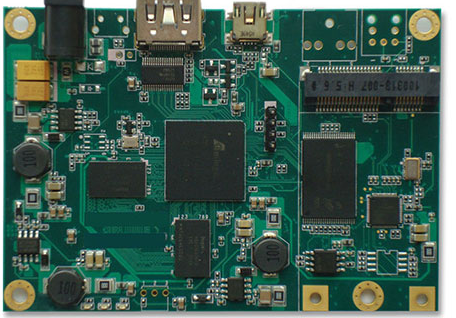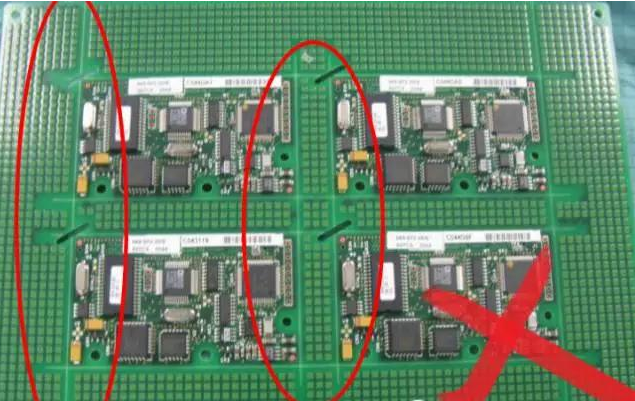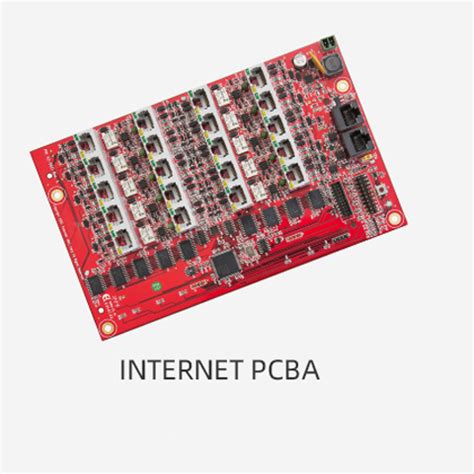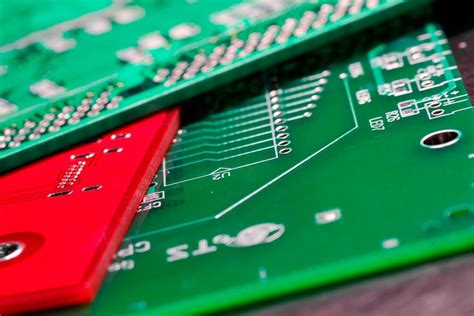Optimizing PCB Manufacturing with IPC Standards
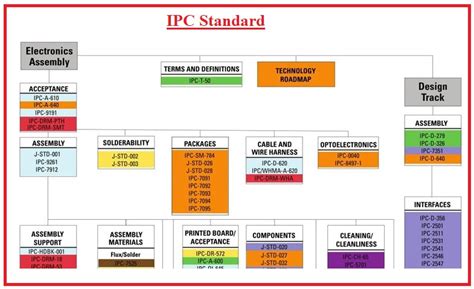
Key Takeaways
Adhering to IPC standards in PCB manufacturing ensures your products meet globally recognized benchmarks for quality and reliability. For PCB manufacturing companies, these standards simplify compliance across markets, reducing delays caused by inconsistent design or assembly practices. By integrating IPC-6012 for performance specifications or IPC-A-610 for acceptability criteria, you can minimize PCB manufacturing cost through fewer defects and reduced rework.
Tip: Regularly audit your processes against the latest IPC revisions to maintain alignment with industry best practices and avoid costly deviations.
A structured approach to IPC compliance also strengthens your PCB manufacturing business by improving traceability and documentation. For example, standardized design rules (e.g., solder mask thickness, trace spacing) prevent errors during assembly, while material selection guidelines ensure compatibility with high-temperature or high-frequency applications.
| IPC Standard | Focus Area | Impact on PCB Manufacturing |
|---|---|---|
| IPC-2221 | Design Guidelines | Reduces layout errors and improves manufacturability |
| IPC-A-600 | Acceptability | Enhances visual inspection consistency |
| IPC-J-STD-001 | Soldering Requirements | Lowers risk of joint failures |
Adopting these frameworks not only streamlines workflows but also positions your operations for scalability. Partnering with certified suppliers, like those listed on Andwin PCBA, ensures materials and components meet IPC criteria, further safeguarding product integrity.
For complex projects, aligning with IPC standards mitigates risks such as signal interference or thermal mismanagement. This is critical in industries like aerospace or medical devices, where reliability directly impacts safety. By embedding IPC compliance into your quality control metrics, you create a foundation for long-term cost efficiency and customer trust.
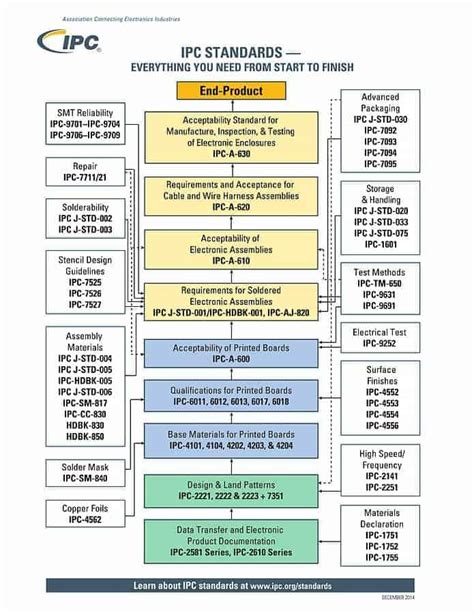
Understanding IPC Standards in Electronics Manufacturing
In PCB manufacturing, adhering to IPC standards ensures consistency, quality, and interoperability across global supply chains. These standards act as a universal language for PCB manufacturing companies, defining best practices for design, assembly, and testing. For example, IPC-A-600 outlines acceptability criteria for printed boards, while IPC-6012 specifies performance requirements for rigid PCBs. By aligning your processes with these guidelines, you reduce errors, minimize rework, and maintain compliance with industry benchmarks—critical for staying competitive in the PCB manufacturing business.
One key advantage of IPC compliance is its impact on PCB manufacturing cost. Standardized processes eliminate guesswork, reduce material waste, and accelerate production timelines. For instance, following IPC-2221 for design rules ensures your boards are manufacturable from the start, avoiding costly redesigns. Similarly, IPC-J-STD-001 for soldering ensures reliable connections, lowering the risk of field failures. Over time, these efficiencies translate into predictable budgets and higher profit margins, especially for high-volume projects.
Moreover, IPC standards streamline collaboration between designers, manufacturers, and suppliers. When everyone follows the same protocols, misunderstandings decrease, and quality control becomes more systematic. This is particularly valuable for PCB manufacturing companies operating in global markets, where inconsistent practices can lead to delays or compliance issues. Standards like IPC-CC-830 for conformal coatings or IPC-A-610 for assembly acceptability create a shared framework for evaluating product quality, regardless of geographic location.
For businesses aiming to scale their PCB manufacturing operations, IPC certification serves as a mark of credibility. Clients and partners recognize certified manufacturers as reliable, reducing the friction in supplier qualification. Additionally, integrating IPC guidelines into your workflows future-proofs your processes, as these standards evolve to address emerging technologies like high-density interconnects (HDIs) or flexible circuits. By prioritizing IPC compliance, you position your PCB manufacturing business to deliver consistent, high-performance electronics while optimizing costs and fostering long-term partnerships.
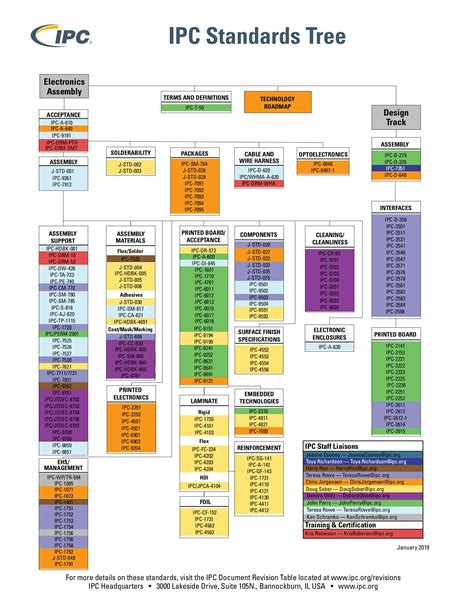
Key IPC Guidelines for PCB Design and Assembly
Adhering to IPC standards ensures your PCB manufacturing processes align with globally recognized benchmarks for quality and reliability. For design, IPC-2221 outlines critical requirements for trace spacing, hole sizes, and material selection, helping you avoid common pitfalls like signal interference or thermal stress. During assembly, IPC-A-610 defines acceptability criteria for solder joints, component placement, and cleanliness, ensuring your PCB manufacturing companies deliver boards that meet rigorous performance expectations.
A key focus is balancing design complexity with manufacturability. Overly intricate layouts may increase PCB manufacturing cost due to specialized equipment or extended production time. By following IPC-2223 for flexible circuits or IPC-7351 for land patterns, you simplify designs without compromising functionality. This approach not only reduces waste but also accelerates timelines, making your PCB manufacturing business more competitive.
Material selection is another priority. IPC-4101 specifies laminate properties, guiding you to choose substrates that withstand environmental stressors like humidity or temperature fluctuations. Pairing this with IPC-SM-840 for solder mask integrity ensures long-term durability, which is vital for applications in aerospace or medical devices.
For assembly workflows, IPC J-STD-001 mandates precise soldering techniques, minimizing defects like cold joints or voids. Automated inspection tools aligned with IPC-2591 (CFX) streamline data exchange between machines, reducing human error. These steps lower rework rates, directly cutting PCB manufacturing cost while boosting yield.
Documentation is equally critical. IPC-2581 standardizes design-to-fabrication data formats, ensuring seamless communication between your team and suppliers. This clarity avoids misinterpretations, especially when scaling production across regions. By embedding these guidelines, you create a foundation for consistent quality, whether prototyping or mass-producing.
Ultimately, integrating IPC standards isn’t just about compliance—it’s about building a resilient, efficient workflow. From reducing material waste to enhancing cross-team collaboration, these protocols help your PCB manufacturing business achieve repeatable success in a fast-evolving industry.
Enhancing Product Reliability Through IPC Compliance
Adhering to IPC standards in PCB manufacturing ensures your products meet globally recognized benchmarks for quality and durability. By following guidelines like IPC-A-600 (acceptability of printed boards) and IPC-6012 (performance specifications for rigid PCBs), you minimize defects such as solder voids, delamination, or misaligned components. For PCB manufacturing companies, compliance isn’t just about meeting requirements—it’s about building trust with clients who rely on consistent performance in demanding environments, from aerospace to medical devices.
A key advantage of IPC compliance is its role in reducing PCB manufacturing cost over time. Strict adherence to material specifications and assembly processes prevents rework, scrap, and field failures, which drain resources and damage reputations. For instance, using IPC-2221 standards during design ensures proper trace spacing and thermal management, avoiding costly redesigns later. Additionally, standardized testing protocols (e.g., IPC-TM-650) help identify flaws early, ensuring defects don’t escalate into expensive recalls.
For a PCB manufacturing business, reliability isn’t just about technical specs—it’s about repeatability. IPC-certified processes create uniformity across production batches, even when working with global suppliers. This consistency simplifies audits, accelerates time-to-market, and ensures compatibility with automated assembly lines. By integrating IPC standards into your workflows, you also future-proof operations against evolving regulations, reducing the risk of non-compliance penalties.
Consider how IPC-CC-830 certifications for conformal coatings protect boards from moisture and contaminants, extending product lifespans in harsh conditions. Such measures not only enhance reliability but also differentiate your services in a competitive market. Ultimately, prioritizing IPC compliance transforms PCB manufacturing from a cost center into a strategic asset, where quality drives customer retention and long-term growth.
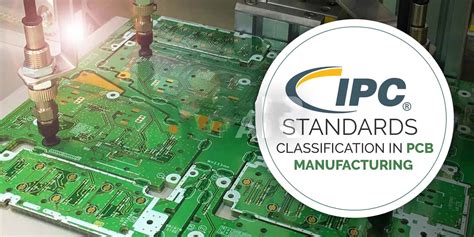
Streamlining Global Production with Standardized Processes
Adopting IPC standards in PCB manufacturing ensures consistency across international supply chains, enabling PCB manufacturing companies to deliver products that meet uniform quality benchmarks regardless of geographic location. By aligning design, materials, and assembly processes with these guidelines, you eliminate variability that often arises from regional differences in practices or regulations. For example, IPC-6012 defines acceptability criteria for rigid boards, while IPC-A-600 outlines inspection standards for workmanship. When your team follows these frameworks, it simplifies collaboration between global partners, reduces misunderstandings, and accelerates time-to-market for complex projects.
Standardization also directly impacts PCB manufacturing cost by minimizing rework and material waste. When processes are harmonized, errors caused by ambiguous specifications drop significantly. This is especially critical in high-volume production, where even minor inefficiencies can compound into substantial financial losses. Additionally, compliance with IPC standards reduces the risk of non-conforming products reaching customers, safeguarding your PCB manufacturing business from costly recalls or reputational damage.
For multinational operations, adhering to IPC guidelines ensures compliance with international regulations, such as RoHS or REACH, which govern hazardous substances and environmental safety. This alignment not only avoids legal penalties but also opens doors to markets with stringent entry requirements. Moreover, standardized documentation—such as IPC-2581 for design data exchange—streamlines communication between engineers, manufacturers, and suppliers, fostering transparency and trust.
Finally, leveraging IPC standards creates a foundation for scalability. Whether you’re expanding production capacity or integrating new technologies like high-density interconnect (HDI) designs, a standardized approach ensures that quality remains consistent. This reliability becomes a competitive advantage, allowing your business to attract clients who prioritize long-term partnerships over short-term cost savings. By embedding IPC compliance into your workflows, you future-proof operations while maintaining the flexibility to adapt to evolving industry demands.
Quality Control Metrics Defined by IPC Certification
When optimizing PCB manufacturing processes, adhering to IPC certification requirements ensures that quality control metrics are both measurable and actionable. These standards provide a framework for evaluating critical aspects like solder joint integrity, layer alignment accuracy, and cleanliness thresholds—factors that directly impact the reliability of electronic assemblies. For PCB manufacturing companies, compliance with IPC guidelines means establishing consistent inspection protocols, such as automated optical inspection (AOI) and X-ray testing, to detect defects early in production. This reduces PCB manufacturing cost by minimizing rework and scrap rates while maintaining compliance with global regulatory expectations.
IPC-certified processes also standardize documentation practices, ensuring traceability across materials, components, and testing phases. For instance, IPC-A-600 outlines acceptability criteria for printed boards, while IPC-J-STD-001 specifies requirements for soldered electrical assemblies. By integrating these benchmarks, your PCB manufacturing business can align with customer expectations for high-performance products, whether producing prototypes or high-volume batches. Moreover, certification fosters trust in supply chains by demonstrating adherence to internationally recognized quality benchmarks, which is critical when collaborating with global partners.
A key advantage of IPC-defined metrics lies in their adaptability to diverse manufacturing scales. Whether addressing thermal stress resistance in automotive electronics or signal integrity in high-speed communication devices, these standards help you prioritize defect prevention over correction. This proactive approach not only enhances product longevity but also streamlines workflows, enabling faster time-to-market without compromising quality. Ultimately, leveraging IPC certification transforms quality control from a reactive checklist into a strategic asset for sustainable growth in competitive markets.

Cost Efficiency and Waste Reduction via IPC Frameworks
Adopting IPC standards in PCB manufacturing enables companies to minimize PCB manufacturing cost while maintaining high-quality outputs. By aligning with guidelines like IPC-A-600 (acceptability of printed boards) and IPC-6012 (performance specifications for rigid PCBs), PCB manufacturing companies can standardize processes, reduce material waste, and avoid costly rework. For example, precise design rules for trace spacing and hole sizing prevent defects during fabrication, lowering the risk of scrapped boards. This systematic approach ensures resources are used efficiently, directly benefiting the PCB manufacturing business through improved margins and faster turnaround times.
IPC frameworks also streamline workflows by defining clear criteria for material selection, assembly, and testing. When teams follow these protocols, they eliminate guesswork and reduce errors that lead to excess inventory or production delays. For instance, adhering to IPC-2221 for design ensures components are placed optimally, minimizing signal interference and the need for post-production fixes. Automation tools integrated with IPC standards further enhance efficiency, cutting labor costs and accelerating scaling for high-volume orders.
Moreover, compliance with IPC certifications like IPC-J-STD-001 (soldering requirements) reduces long-term expenses by improving product reliability. Fewer field failures mean lower warranty claims and reputational risks, which can erode profitability in competitive markets. By tracking metrics such as defect rates and yield percentages, PCB manufacturing companies gain actionable insights to refine their processes continuously.
Finally, waste reduction isn’t just about cost—it supports sustainability goals. IPC standards encourage lean practices, such as recycling copper cladding or reusing substrates, aligning the PCB manufacturing business with eco-friendly initiatives. For global operations, standardized workflows ensure consistency across facilities, reducing overhead and simplifying compliance audits. By embedding IPC frameworks into every stage, you transform cost challenges into opportunities for innovation and growth.
Case Study: Implementing IPC Standards in Complex Projects
When managing intricate PCB manufacturing projects, adhering to IPC standards becomes critical for balancing quality, timelines, and PCB manufacturing cost. Consider a scenario where a PCB manufacturing business faced challenges in producing a high-density interconnect (HDI) board with tight tolerances for aerospace applications. By integrating IPC-6012 (for rigid PCB performance) and IPC-2221 (for design guidelines), the company standardized material selection, traceability, and testing protocols. This alignment reduced rework rates by 22% and accelerated time-to-market by streamlining communication between global teams.
For instance, one PCB manufacturing company leveraged IPC-A-600 (acceptability criteria) to resolve disputes over solder joint quality during assembly. By training their inspection teams using IPC-certified modules, they eliminated subjectivity in defect classification, ensuring consistency across their global production workflows. This approach not only improved product reliability but also minimized PCB manufacturing cost by reducing scrap and warranty claims. Additionally, adopting IPC-CC-830 (conformal coating standards) enhanced protection against environmental stressors, a key requirement for the project’s harsh operating conditions.
The case highlights how IPC frameworks enable PCB manufacturing companies to tackle complexity systematically. By embedding standards into every phase—from design validation to final inspection—you create a repeatable process that mitigates risks in multi-layered projects. This strategic focus on compliance doesn’t just safeguard quality; it positions your PCB manufacturing business to scale efficiently, even when handling advanced technologies like embedded components or high-speed signal integrity demands.
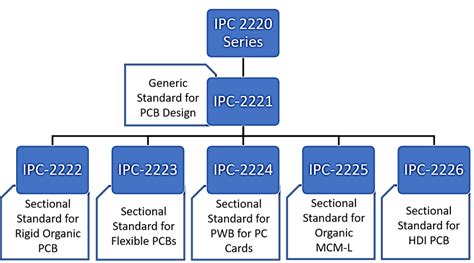
Future Trends in PCB Manufacturing and Evolving IPC Requirements
As PCB manufacturing advances, emerging technologies and shifting market demands are reshaping the industry. To stay competitive, PCB manufacturing companies must anticipate trends like miniaturization, higher circuit density, and the integration of advanced materials such as flexible substrates. These innovations require tighter adherence to evolving IPC standards, which are adapting to address challenges in thermal management, signal integrity, and reliability for next-generation electronics. For instance, standards like IPC-2223 and IPC-6013 are being updated to guide the design and testing of high-frequency and high-speed boards, ensuring they meet performance benchmarks even as complexity grows.
Sustainability is another critical driver. With rising scrutiny on environmental impact, PCB manufacturing businesses are prioritizing eco-friendly practices, from reducing chemical waste to adopting lead-free soldering processes. Updated IPC frameworks, such as IPC-1401 for sustainable manufacturing, help companies align with global regulations while minimizing PCB manufacturing cost through optimized resource utilization. Additionally, the rise of smart factories and Industry 4.0 technologies—like AI-driven inspection systems and IoT-enabled supply chains—demand standardized protocols to ensure seamless integration. IPC’s role here is pivotal, offering guidelines for digital thread implementation and data interoperability across production stages.
Looking ahead, the proliferation of 5G, automotive electronics, and IoT devices will push PCB manufacturing toward higher reliability and scalability. Standards like IPC-6012EM for aerospace and defense applications highlight the need for rigorous testing in extreme environments. By staying ahead of these trends and adopting updated IPC requirements, PCB manufacturing companies can future-proof their operations, reduce rework, and deliver products that meet both customer expectations and global compliance mandates. The key lies in balancing innovation with standardization—leveraging IPC’s evolving frameworks to maintain quality without compromising agility in a fast-paced market.
Conclusion
Adhering to IPC standards in PCB manufacturing ensures your processes align with globally recognized benchmarks for quality and reliability. By integrating these guidelines, PCB manufacturing companies can minimize defects, reduce rework, and deliver products that meet rigorous industry expectations. This not only strengthens your reputation but also builds trust with clients who prioritize consistent performance and long-term durability in their electronics.
A focus on IPC compliance directly impacts PCB manufacturing cost by streamlining workflows, cutting material waste, and avoiding costly delays from non-conforming designs. For instance, standardized design rules reduce ambiguities, allowing your PCB manufacturing business to scale operations without compromising precision—even when collaborating with international partners. Additionally, IPC-certified quality control metrics provide clear benchmarks, enabling you to identify inefficiencies early and maintain cost-effective production cycles.
As competition intensifies, leveraging IPC frameworks positions your business to adapt to evolving technologies while maintaining compliance across markets. Whether you’re prototyping or mass-producing, these standards ensure your products meet regulatory requirements and perform reliably under diverse conditions. Ultimately, investing in IPC-aligned practices isn’t just about meeting today’s demands—it’s about future-proofing your operations in a rapidly advancing industry.
Frequently Asked Questions
How do IPC standards impact pcb manufacturing quality?
IPC standards define precise guidelines for material selection, design, and assembly processes, ensuring consistent quality across pcb manufacturing companies. By adhering to these benchmarks, manufacturers minimize defects, improve reliability, and meet global compliance requirements.
What role do IPC guidelines play in controlling pcb manufacturing cost?
Standardized processes reduce rework, material waste, and production delays. For instance, IPC-2221 and IPC-A-600 outline design tolerances and acceptability criteria, helping pcb manufacturing businesses avoid costly errors. Over time, this leads to lower per-unit costs and higher profitability.
Can IPC compliance improve collaboration between global pcb manufacturing partners?
Yes. IPC standards create a universal "language" for design and production. Whether working with suppliers in Asia or assembly teams in Europe, standardized workflows ensure seamless integration, reducing miscommunication and delays in pcb manufacturing projects.
Do IPC certifications add value to a pcb manufacturing business?
Absolutely. Certifications like IPC-A-610 (Acceptability of Electronic Assemblies) signal to clients that your processes meet industry-recognized benchmarks. This builds trust, differentiates your business, and can justify premium pricing in competitive markets.
How do evolving IPC standards address future pcb manufacturing challenges?
IPC regularly updates guidelines to reflect advancements like high-density interconnects or sustainable materials. Staying compliant ensures pcb manufacturing companies remain agile, adapting to trends such as IoT miniaturization or eco-friendly production demands.
What metrics do IPC standards provide for quality control in pcb manufacturing?
Standards like IPC-6012 define acceptance criteria for rigid boards, including solderability and electrical performance. These metrics enable pcb manufacturing businesses to implement quantifiable quality checks, reducing variability and enhancing product longevity.
Explore Expert PCB Manufacturing Solutions
For tailored guidance on optimizing your production with IPC standards, please click here to visit Andwin PCB. Our team specializes in cost-effective, high-quality solutions for complex pcb manufacturing needs.


